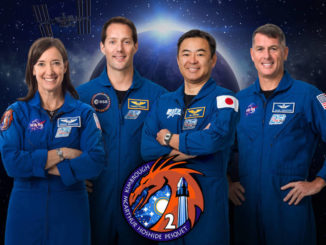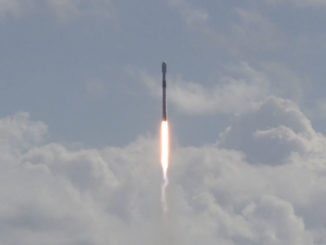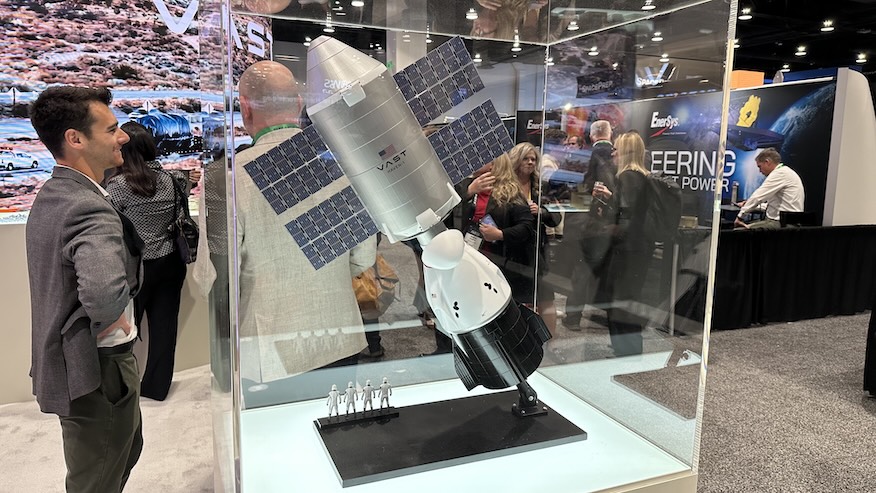
Space habitation company, Vast, is now one year away from being able to stake its claim as the first commercial space station in history.
The company based in Long Beach, California, aims to launch its single-module Haven-1 space station on a SpaceX Falcon 9 rocket in May 2026. To that end, it completed both its primary structure and qualification article and is moving into manufacturing the flight version.
“We’ve locked the design, we’ve released those drawings to our manufacturing CNC shop and we are welding it with a view to start integration and complete the flight primary structure by the end of July,” said Vast CEO Max Haot. “So, a lot more visible progress. We are just finishing out control room now. The team is there, everybody’s focused and locked in on it and we’re getting it done.”
Speaking with Spaceflight Now at the 40th Space Symposium in Colorado in April, Haot said the Vast team encompasses about 800 people at facilities across the United States. The company plans to grow by about 50 people each month and will have a roughly 1,000-person workforce in place by the time they’re ready to fly.
“It feels great. It feels easier every day than it was when we had less people, less facilities and, maybe more time, but still a lot to do,” Haot said.
Vast announced Haven-1 back in 2023 as it works to design and manufacture a space station capable of succeeding the International Space Station. NASA signed five-year, unfunded Space Act Agreement (SAA) with Vast on June 13, 2023, with the stated purpose of helping Vast’s “concept maturation and eventual implementation of [its] space station modules.”
“As part of the agency’s overall efforts, NASA is supporting the design and development of multiple commercial space stations through funded and unfunded agreements using a two-phase approach,” NASA said in a statement to Spaceflight Now.
“During the first phase, NASA is assisting its commercial space station partners in the completion of preliminary design review, or greater level of design maturity, on their concepts for future commercial station and service offerings. The providers are on track to meet that goal with some already beginning testing and manufacturing of key systems and elements.”
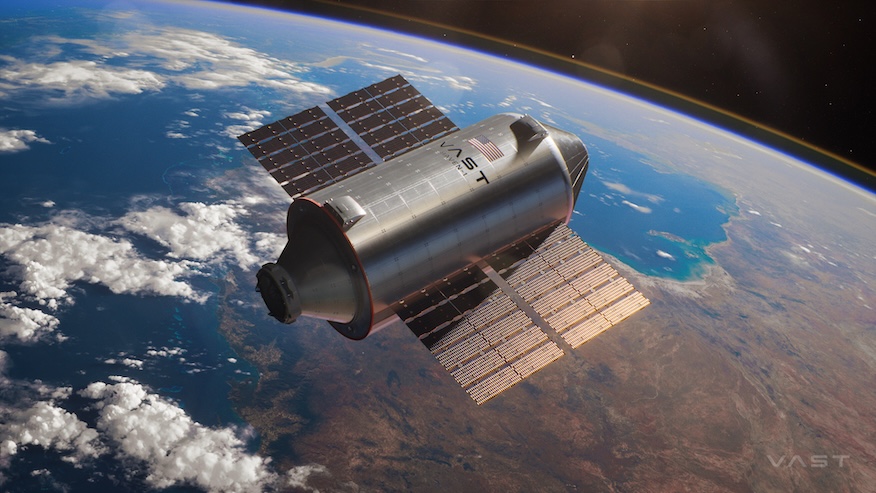
While the timing has shifted somewhat over the years since, Vast’s SAA also laid out the company’s planned 22-milestone roadmap to give NASA an overview of where it intended to go throughout the development process, ultimately leading to the Haven-2 space station, which is designed to be capable of replacing the ISS by 2028:
- May 2023 – SAA Kickoff Meeting
- June 2023 – Attitude Navigation Hardware Development Test
- July 2023 – Sub-Scale Demo Module Primary Design Review (PDR)
- Nov. 2023 – Oxygen Pressurization Demonstration
- Jan. 2024 – Large Window Pressure Test
- March 2024 – Air Revitalization Characterization Test
- May 2024 – Sub-Scale Demo Module Critical Design Review (CDR)
- Nov. 2024 – Sub-Scale Solar Array Deployment Test
- Jan. 2025 – Sub-Scale Demo Module Test Readiness Review (TRR)
- Feb. 2025 – Hardware-in-the-Loop Mission Simulation
- Aug. 2025 – Sub-Scale Demo Module Delivery to Launch Site
- Oct. 2025 – Full-Scale Demo Module Preliminary Design Review
- Dec. 2025 – Sub-Scale Module Launch
- March 2026 – Sub-Scale Demo Module Crew Mission
- July 2026 – Sub-Scale Demo Module Spin Test 1
- Oct. 2026 – Sub-Scale Demo Module Spin Test 2
- Jan. 2027 – Full-Scale Demo Module Critical Design Review (CDR)
- April 2027 – Full-Scale Solar Array Deployment Test
- July 2027 – Full-Scale Launch Separation System Test
- Oct. 2027 – Full-Scale Pressure Hull Proof Test
- March 2028 – Full-Scale Demo Module Test Readiness Review
- April 2028 – Full-Scale Hardware-in-the-Loop Mission Simulation
Back in February, Vast announced the completion of the Haven-1 primary structure qualification testing out at their facilities in Mojave, California. Through the experience of getting up to and through that testing, they made the determination that a launch in August 2025 wasn’t feasible and shifted the planned launch date to no earlier than May 2026.
A Vast spokesperson confirmed on April 28, 2025, that both the Oxygen Pressurization Demonstration and Large Window Pressure Test milestones were successfully completed and said others, like the Air Revitalization Characterization Test, are also in the books.
“We’re progressing on track aligned with our scheduled launch of Haven-1 in May 2026. We will complete the manufacturing and testing of the flight primary structure in July 2025 and later in the summer, we’ll launch Haven Demo, an in-orbit testbed for critical space station technologies and qualified hardware and software,” the Vast spokesperson said.
“From July-December 2025, we’ll complete the vehicle integration and checkout, including subsystem manufacturing and testing. Then the environmental test campaign (acoustics, vibration, EMI, TVAC) will take place at NASA’s Glenn Research Center at the Neil Armstrong Test Facility from January-March 2026 before the final step of pre-launch operations and planning.”
EMI is shorthand for EMI/EMC or Electromagnetic Interference/Electromagnetic Compatibility testing, which helps ensure the reliability of electronic systems within a spacecraft. TVAC is an abbreviation for thermal vacuum testing, which involves exposing a spacecraft to a simulated space environment in a controlled chamber.
In a statement to Spaceflight Now, NASA also clarified its role in the agreement, stating that it’s “providing support on request” and using “minimal government resources” to do so, similar to the other SAA recipients.
The agency also said that the 22 milestones laid out by Vast in 2023 are more like guidelines than hard and fast rules. Also, since no money was exchanged for this agreement, NASA said, “Milestones are unfunded and there is no requirement for completion.”
“While the milestones are intended to provide a measure of progress, they are not a partner responsibility under the agreement,” NASA said.
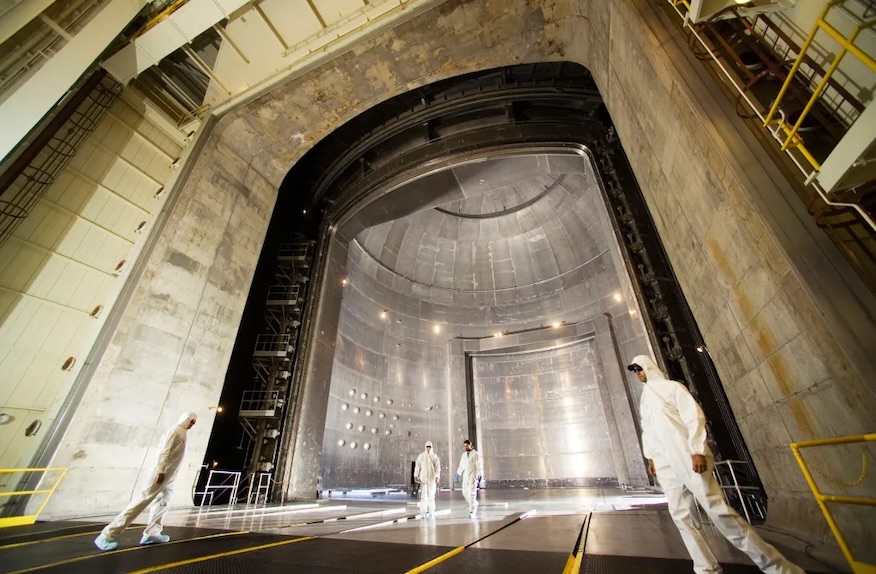
Haot said before the Haven-1 environmental test campaign begins, Vast will continue testing each piece and sub-assembly of their space station at their own facilities. But once the vehicle is fully integrated and is a single, 14-ton structure, he said they really needed NASA on board for the next phase, which centers on the vibration test and a thermal vacuum test.
For that work, they were able to reach a contract agreement with NASA to send the Haven-1 flight article to NASA’s Glenn Research Center at the Neil Armstrong Test Facility in Sandusky, Ohio. That test campaign will begin in early 2026.
“There’s basically no other facility in the world that could test such a big object as Haven-1. So firstly, it’s a relief that we have the slot. We booked it, we signed a contract because there’s not any other place we can do it,” Haot said. “And also, the contract was actually sponsored, in some ways, supported by NASA, so that we actually have priority over other programs.”
The next big announcement from Vast will be naming the crew who will be the first to fly onboard Haven-1. Haot said to expect that news “at some point soon.”
“Our goal is to secure it with mostly space agencies, international space agencies because Haven-1 is designed to be a proof point for NASA that we can work with them. So, that’s our ideal customer,” Haot said. “We are in negotiations with multiple international space agencies and I can’t wait to eventually reveal who the crew is.”
Haot said they are also getting interest from private individuals, but stressed that those who come on board need to be science focused, not tourists.
“None of the people that we talk to want to be tourists. They want to work with the payloads in the Haven-1 lab facility we have,” Haot said.
Form meets function
The Haven-1 spacecraft has a 45-meter-cubed volume and is designed to support up to four crew members for missions of an average of two-weeks in length.
It consists of four crew quarters for sleeping, several mid-deck lockers for science modules, a common area with a deployable table and multiple crew interfaces.
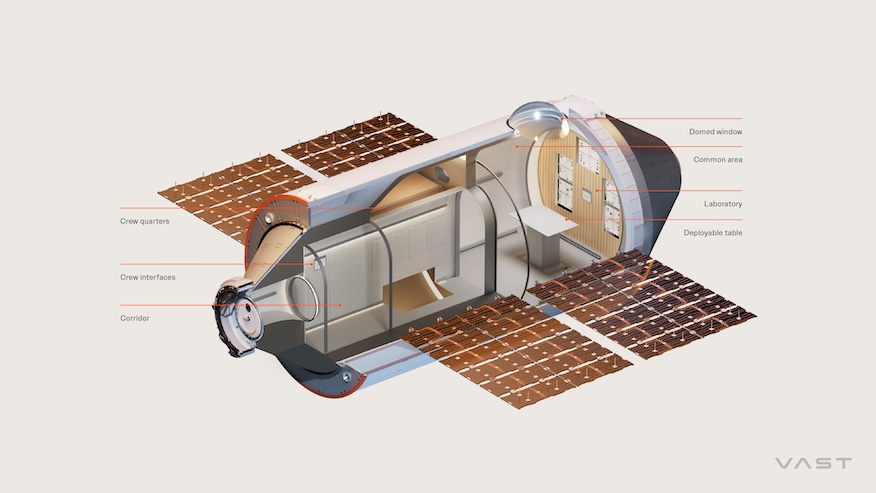
Those who see it may conjure up memories of an Apple Store and there’s a good reason for that. The combination of replica wood panels and a creamy-white color scheme come, in part, from the mind of Peter Russell-Clarke, a former Apple designer who helped influence the layout of the tech giant’s headquarters, stores and the design of products like the Apple Watch, iPhones and Mac computers.
“We’re not building a luxury destination. We’re building a laboratory in space, but it should feel good. It should great to sleep in it. You should feel rested. It should be easy to communicate,” Haot said. “That means creating an environment that is comfortable to the human, to enhance the key mission objective.”
Andrew Feustel, Vast’s Lead Astronaut who goes by Drew, told Spaceflight Now that the idea was to bring a sense of Earth onto the Haven-1 in order to make it as comfortable as possible. He said when crafting the wood-like walls, they began with maple wood slats and then moved to a veneer finish on a honeycomb background.
“The idea is that you create natural surfaces to give you that connection back to Earth,” Feustel said. “One of the things that many astronauts talk about is that separation of having six people or eight people or one person in space separated from the seven billion people down on the planet and that does create a psychological separation from Earth.
“So, having a spacecraft that reconnects you makes it easier to psychologically stay connected to the people you know and love and everything you know about life, which is down there on that planet.”
Haven-1’s domed window will enable the crew to observe and photograph the Earth and space. This test fixture is critical to confirming the window’s strength and ensuring crew safety in space. Each test kick simulates hundreds of pounds of force, mimicking accidental bumps from… pic.twitter.com/DpLV17EwhT
— Vast (@vast) April 25, 2025
Crew members will also be able to look down on the planet Earth through the 1.1 m (3.6 ft) domed window. Vast recently published a video of the window undergoing strength testing. Each so-called “kick test” simulated “hundreds of pounds of force, mimicking accidental bumps from astronauts inside the station.
“It’s really important to have a window as big as we could make it,” Feustel said. “It’s gone through a few iterations, but we’ve sort of landed on this design and this size and we think it’s really effective for doing just that: having those views of Earth that are really important and being able to take a few photos as well.”
Bringing along partners
Vast is jockeying to become the successor to the International Space Station along with other competitors. To that end, it hopes to cement its place in the history of low Earth orbit by becoming the first, commercial space station with the launch of Haven-1.
If all goes well, Vast aims to not only have its first station in orbit by next May, but also to welcome a four-person crew no earlier than late June 2026. Part of making that a reality is a partnership between the company and SpaceX.
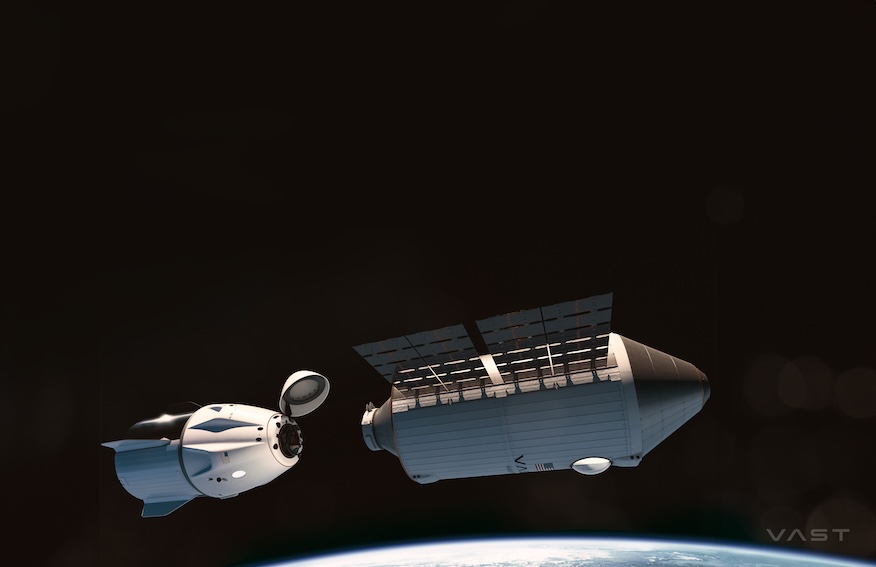
The connection between the two companies has been long established. SpaceX alumni make up seven members of Vast’s leadership team and nine members of its engineering leadership. Four out of seven members of Vast’s group of advisors also have past experience at SpaceX.
Haot said when Vast began pursuing the Haven-1 program in 2023, creating a formal relationship with SpaceX was high on their to-do list.
“The first thing we did is we went to SpaceX. We don’t believe that you should design a space station without the visiting vehicle, in this case Dragon, working with us very collaboratively,” Haot said. “It’s actually an integrated system, from a thermal point of view, from a life support point of view, they have to dock together, we have to keep the attitude. There’s a lot of engineering detail and complexity.
“You don’t want to design your space station and then six months before you launch it, call the Dragon team to make sure they’re ok.”
Part of that synergy was having SpaceX sell its docking adapter to Vast and to also conduct their own testing on Dragon at SpaceX’s facilities, also in Hawthorne, California. Haot said soon SpaceX will send Vast the flight-ready, passive docking adaptor, which will be integrated onto the flight article Haven-1.
“They are the experts, right? They are doing it (docking) to the ISS. They know, obviously, the standard. They have built the technology to do it. It’s called ‘Dragon Eye,’” Haot said. “And they basically looked at Haven-1 and they said, ‘Hey, can you keep the attitude, you know, the pointing to this tolerance?’ We said, ‘We can.’”
To support the docking process, SpaceX will add reflectors to Haven-1 in addition to the docking adapter.
Beyond its work with SpaceX, Vast is also aligning itself with several entities that have experience with the International Space Station. It first announced partnerships with Florida—based Redwire Space and European company, Yuri, back in August 2024.
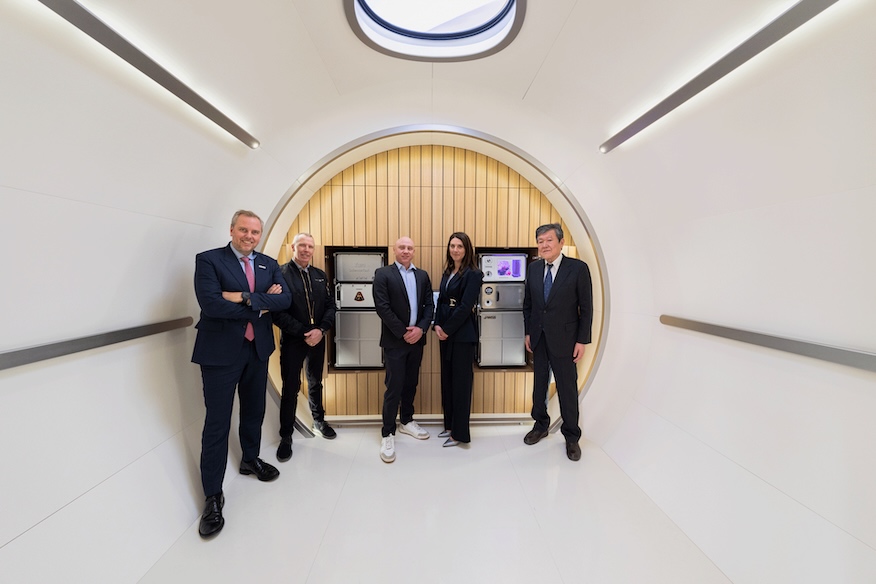
Redwire is contributing its Advanced Space Equipment Processor 4 (ADSETP4), which can host up to four pharmaceutical processing cassettes called Pharmaceutical In-space Laboratory – Bio-crystal Optimization Xperiments (PIL-BOXs). Meanwhile, Yuri is adding its ScienceTaxi incubator with a centrifuge, which allows for adjustments under different gravity conditions for up to 38 experiment units called “ScienceShells.”
During the 40th Space Symposium in early April, Vast announced three more customers, JAMSS, Interstellar Lab and Exobiosphere, which will occupy three more of the 10 total mid-deck lockers, leaving five more remaining that don’t have announced occupants.
Haot said they sought customers who are involved with “important research and science” that they believe will be “good for Vast and good for the customers that will be flying on Vast.”
“It’s also the credibility of the company. Our strategy is to work with as many people that have existing heritage on the ISS,” Haot said. “And then, it’s a negotiation and agreeing to the pricing and so on.”
Vast has also agreements for the next stage in the Haven program, Haven-2. It signed an agreement with The Exploration Company to use its reusable Nyx space capsule for cargo missions and a memorandum of understanding with the European Space Agency (ESA) to explore future crew and cargo operations onboard the Haven-2.
Haven-2 in work
The effort being put into Haven-1, and the uncrewed Haven Demo satellite before it, are designed to pave the way for the Haven-2 space station. The modules of that future station will be nearly five-meters longer than that of Haven-1 and feature two windows and two docking ports.
While the Haven-1 is able to be launched on a SpaceX Falcon 9 rocket, the Haven-2 modules will require a Falcon Heavy using an extended payload fairing. The Haven-2 will also be capable of receiving cargo missions and the ability to host 720 days worth of on-board crew consumables, compared to 160 days with Haven-1.
The plan is to launch the first of the Haven-2 modules in 2028 and continue launching the next three modules at a rate of about one every six months. Following the launch of the Haven Core module in 2030, the final version of the Haven-2 space station would be deployed on orbit by 2032.
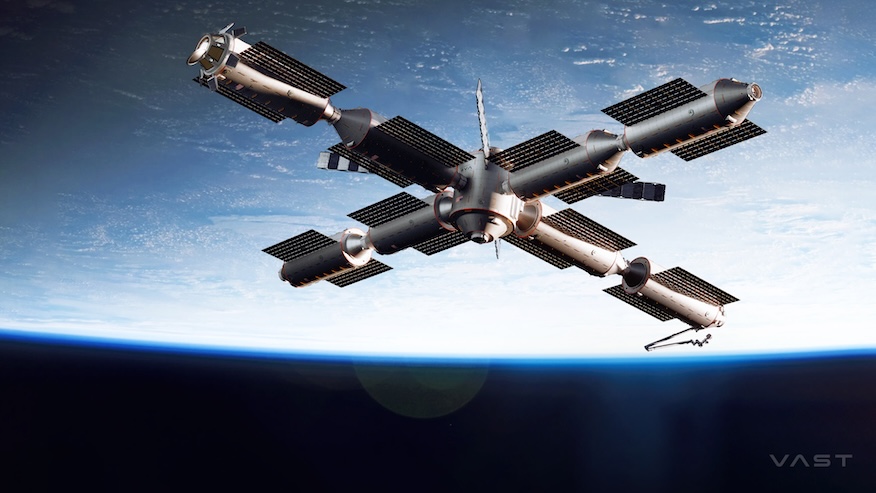
That 2032 version of Haven-2 would have a crew volume of 510 cubic meters. On its website, Vast shows opens for several roles connected to Haven-2, including one labeled “Mission Manager, Crew.”
That person would be designated to “Manage entire crew mission including onboarding, training, launch, on-orbit experience to low earth orbital destinations, being personally responsible for end-to-end mission success (contract award through return and rehabilitation).” That individual would also need to “Act as the technical subject matter expert for crewmember accommodations throughout a mission to Haven-1.”
NASA expects to issue a Draft Request for Proposal (RFP) by the end of the third quarter of fiscal year 2025 (Q3 FY25) and a final RFP by the end of Q4 FY25.

